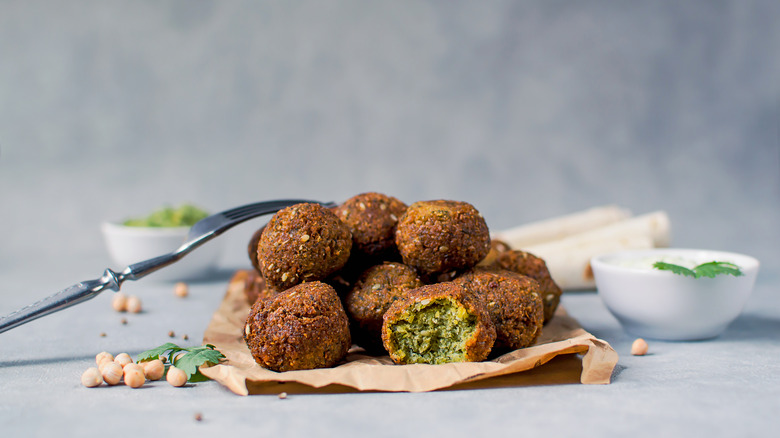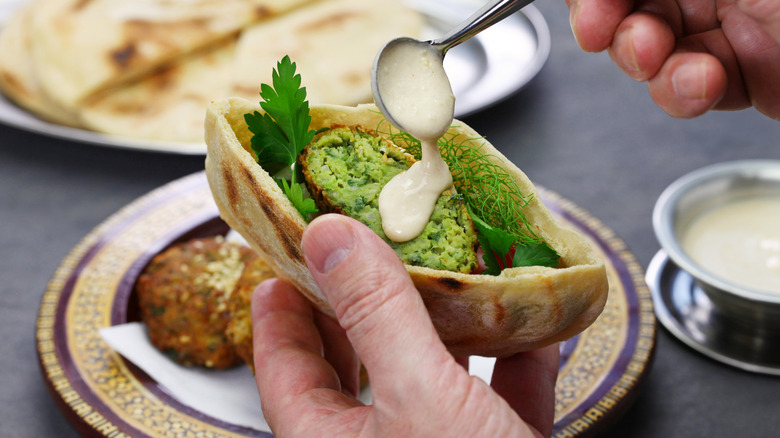The Real Difference Between Ta'ameya And Falafel
If you've ever eaten falafel, you know how delicious these Middle Eastern fried legume patties can be. Immensely popular all across the Arab world, from Israel to Palestine to Lebanon to Yemen (via History Today), crisp falafel are often served on a plate alongside hummus and drizzled with sesame-based tahini sauce, or stuffed into a pita with crunchy vegetables including lettuce and pickles (via Tori Avey).
Though they can be prepared with a variety of legumes, the falafel most of us are likely familiar with are made using chickpeas. The dried, soaked garbanzos are ground into a chunky paste with flavorings such as onion and parsley, formed into patties or balls, and then shallow-fried in hot oil until crispy on the outside and tender on the inside (via Tori Avey). But did you know that Egypt boasts a similar legume patty called ta'ameya? It's made with dried fava beans, not chickpeas, and evidence points to this variation actually being the original falafel that later spread throughout the Middle East.
Egypt's version of falafel might be the original
You've probably snacked on your fair share of falafel, but have you ever tried ta'ameya? Egypt's version of the fritters are made with dried fava beans instead of chickpeas, and emerge from the skillet vibrantly green (via Egyptian Epicurean). According to History Today, this variation might well be the original version of falafel — not the chickpea type widely known today.
The site writes that falafel is most likely a modern dish, requested from local cooks by officers of the invading British army in the 1880s. British officers, many of whom were stationed in India in those years as part of the British raj, or rule over the country (via Britannica), likely became accustomed to Indian vegetable and legume fritters such as vada and bonda, History Today opines. Requesting those fritters from Egyptian cooks, they were likely presented with something made from fava beans, as the name falafel indicates; The Arab word for the legume is fūl.
Tori Avey makes the same inference, sourcing from The Encyclopedia of Jewish Food: "The first known appearance of legume fritters (aka falafel) in the Middle East appears to be in Egypt, where they were made from dried white fava beans (ful nabed) and called tamiya/ta-amia (from the Arabic for 'nourishment'); These fritters were a light green color inside." So the next time you make falafel — or eat it while out — see if you can opt for the fava bean version.

